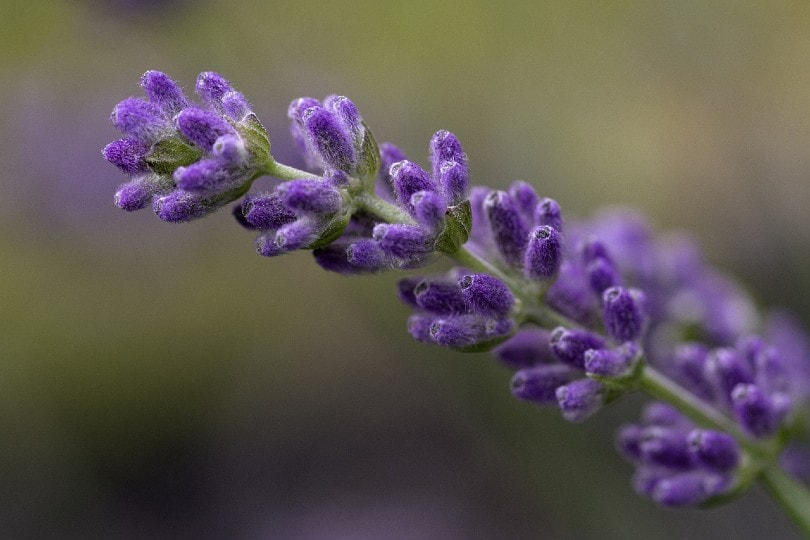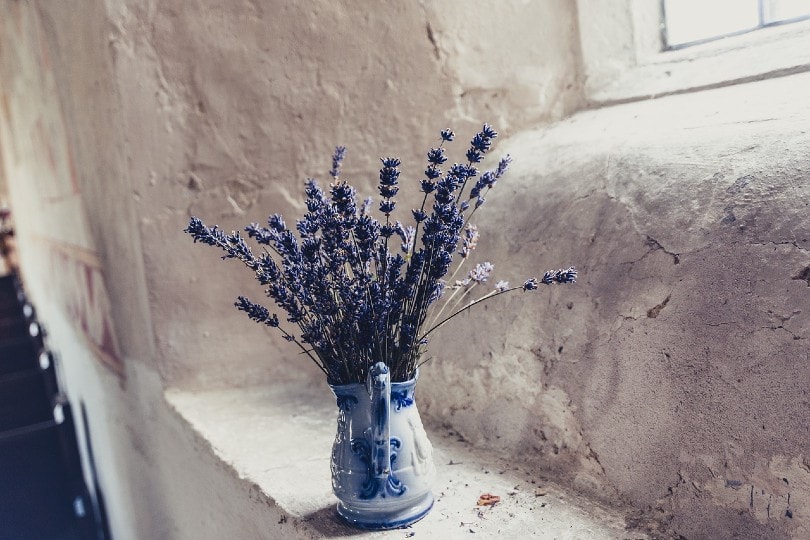Can Lavender Grow in Shade? Facts, Types & Alternatives
-
Pete Ortiz
- Last updated:

There are many shade-loving plants you can grow, but unfortunately, lavender is not one of those plants. Typically, a lavender plant requires a bright sunny spot in the yard to thrive. Some varieties of lavender show a bit of shade tolerance and do alright in partial shade.
Even varieties of lavender that can survive in partial shade will not be as vibrant or fragrant as they would be with full sun, though. So, to really enjoy your lavender plants, they are best suited for full sun.
 Shade Tolerant Varieties of Lavender
Shade Tolerant Varieties of Lavender
If you really want a lavender plant in a shady spot in your garden, you have a couple of options.
- English Lavender (Lavandula angustifolia): This cultivar prefers the sun but will still grow and survive in somewhat shady conditions. The pH levels in the soil are still important whether it’s in sun or shade, so keep that in mind.
- French Lavender (Lavandula dentata): This is another cultivar that can survive with some shade. Although, it is a bit less tolerant of shade than its English counterpart. So, don’t expect lots of growth or beautiful scent if you are planting it in the shade.

Growing Lavender in Shade
If you can prevent full shade, some lavender plants will do okay with dappled shade throughout the day if they’re getting as much sun as possible.
One of the biggest problems with shade is the wet soil. Without the sun to help dry the ground, lavender roots are susceptible to root rot. This is why well-draining soil is so important for lavender plants—especially if they are in any shade.
When growing lavender plants in the shade, the best thing you can do for them is ensure adequate space between plants and improve soil quality to increase drainage. This helps minimize the risk of fungal disease.
The 5 Shade-Loving Alternatives to Lavender
There are several lavender alternatives for your shady garden.
1. Catmint (Nepeta spp.)

This is probably the closest looking plant you can get to lavender. It has similar needs to lavender as far as the sun goes. However, it’s typically much more shade-resistant and does just fine in partial shade.
2. English Bluebells (Hyacinthoides non-scripta)
This plant will give you similar colors as lavender in the garden. The nice thing about English bluebells is that they are extremely tolerant plants. They take minimal care to thrive and do wonderful with partial shade—even full shade in some circumstances.
3. Black Lily (Lilium Asiatic ‘Black Pearl’)
If you want to switch things up from the purple and blue of lavender, a black lily is another option for a shady garden. They are not actually black but a deep, dark purple. This particular plant will do well either in full sun or partial shade.
4. Toad Lily (Tricyrtis hirta)
Depending on the variety you get, toad lily grows and blooms with beautiful white or purple flowers. It makes a great alternative to lavender plants in your yard because it will thrive in partial and full shade and requires minimal effort to grow. The only thing of concern is protecting them from the wind because of their tall stalks.
5. Foxglove (Digitalis purpurea)
White, pink, or purple are your flowering options if you go with foxglove in your garden. This beautiful plant will grow well in partial and full shade. Technically, foxglove isn’t a perennial. However, it self-seeds every year and creates little colonies, producing alternating blooming seasons between the plants.
Closing Thoughts
For the most part, outside of a couple of shade-resistant varieties, lavender is not the plant you want for a shady spot in your garden. Luckily, if you were set on the colors, there are a couple of options for similar-looking plants. If you’re not, there are a ton of shade-resistant perennials out there too.
Featured Image Credit: DIANACAPO, Pixabay
Contents

 Shade Tolerant Varieties of Lavender
Shade Tolerant Varieties of Lavender
